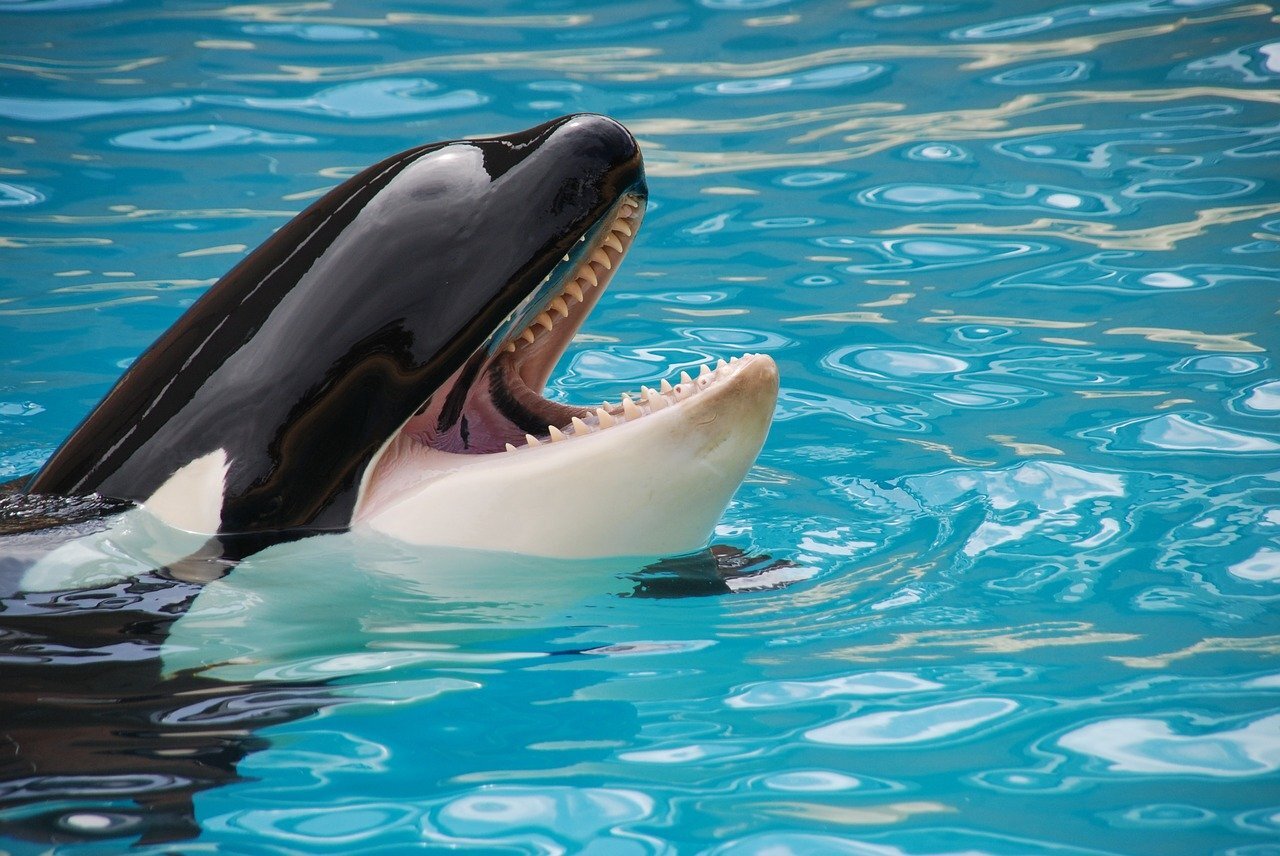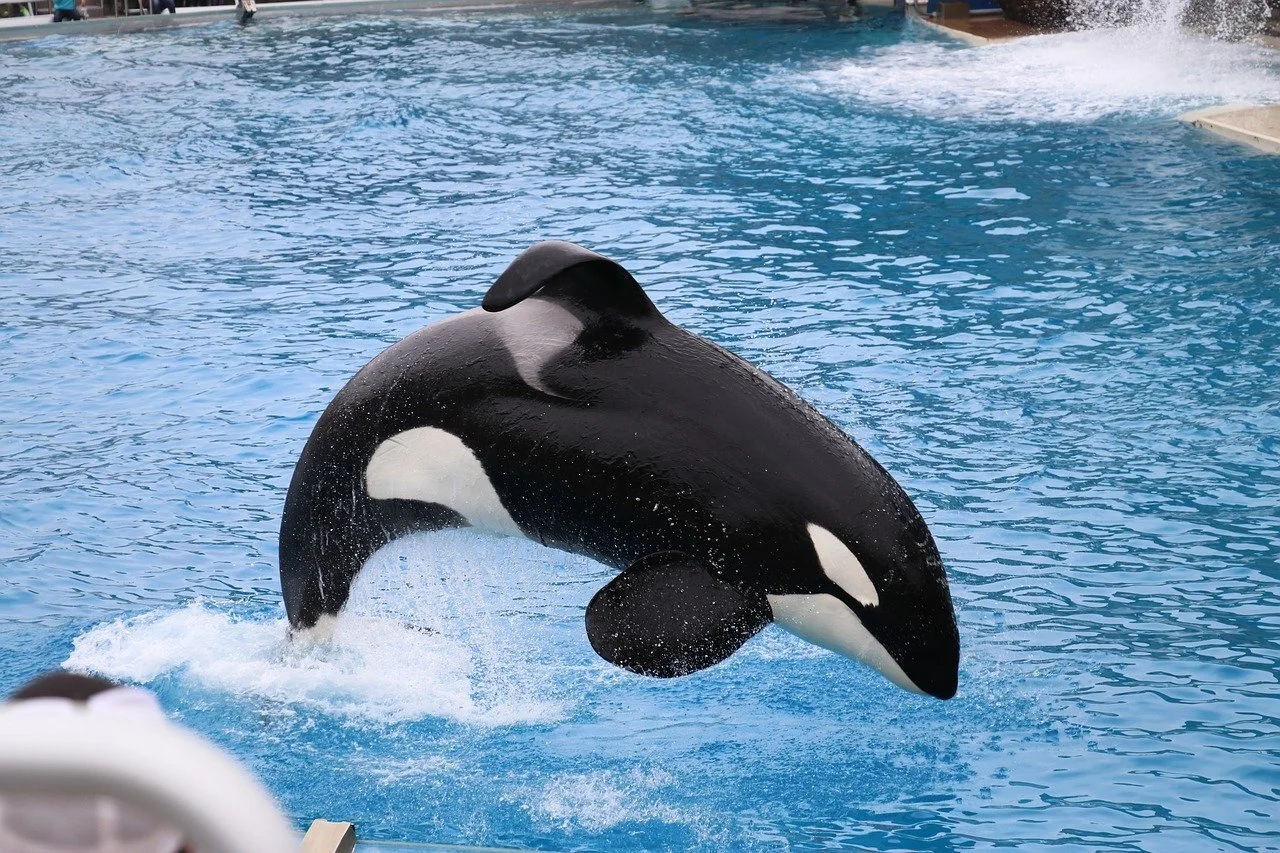Killer Whales in Captivity: The Current State of Orca Captivity
It is no longer a secret that killer whale captivity is a cruel and destructive process that ruins the lives of both captive orca and the ecosystems they are stolen from. Yet despite our knowledge of how problematic killer whale captivity is, there are still 59 captive orcas living in marine parks across the globe.
Why are killer whales still in captivity, and is there any hope for a world without a single captive killer whale? Xplore Our Planet looks at the current state of orca captivity.
Are Killer Whales Still Captured for Marine Parks?
Killer whale captures were intensely popular during the 60s to 80s but fell out of favour in Western society in later years. In many locations, it is illegal to capture wild orca for display, while a long list of countries without orca populations have banned parks from purchasing and displaying captured killer whales from overseas.
However, that does not mean killer whales are not still subjected to capture at times.
Specifically, we’re referring to activity in Russia over the past few years that has seen killer whales captured for distribution to the rising number of marine parks within China. As recently as 2019, the infamous ‘whale jail’ controversy saw over 100 belugas and killer whales held in pens following capture for sale to marine parks. While the animals were eventually released after a hard-fought campaign by law-makers and conservationists, the discovery of the whale jail (made by drone) showed how the illegal trade of orca was still thriving in unpoliced regions.
In response to the controversy, Russia updated its list of endangered species for the first time in 20 years. Listing killer whales as endangered, the law change was supposed to make it more difficult to traffic the animals. 2020 saw no killer whales captured on record, however, there are plans to capture a handful of animals in 2021 for scientific research. It is also not known if there were any illegal captures.
Is it Illegal to Breed Captive Killer Whales?
A very select few locations, including the state of California and France, have banned the breeding of killer whales in commercial marine park settings. This move has gone further to cement policies against killer whales in captivity. While the moves don’t go as far as forcing marine parks to release or rehabilitate their captive killer whales into the wild, the rules effectively stop future generations of orca being subjected to captive settings.
Bans on capture and breeding draw a line in the sand. What’s done is done, but no more.
But only a few locations have implemented this ban on breeding. In the USA, killer whales held in California can no longer legally be bred, but that is not the case of killer whales in Florida and Texas. At the moment, SeaWorld has chosen to end its controversial breeding program, with the announcement of their final captive birth coming in 2017. There are hopes SeaWorld continue to honour this agreement, but without legal obligation, it’s unknown if the practice will resume in the future. With only one other orca held captive in the USA outside of SeaWorld, the marine park chain is the only commercial enterprise in the country capable of breeding captive killer whales.
Despite claiming their breeding program is over though, lobbyists for SeaWorld in Florida killed a bill banning orca breeding in the state as of 2019, two years after they claimed to end their program. If there is no intention to continue captive killer whale breeding, it must be questioned why SeaWorld fought a bill banning breeding.
In other locations where captive orca are kept, including China, Japan, Spain and Russia, killer whale breeding is still allowed. In 2017, a marine park group in China started up a brand new breeding program. Given that captive orcas generally live around 20-30 years, with the longest-lived orca Lolita still going at 50, new breeding programs mean that captive orcas could be around for many, many decades, even with worldwide bans on wild captures.
Captive Killer Whales: A Summary
The popularity of killer whales in captivity is in decline in Western culture but China is creating a massive new market and in Japan and Russia there is little resistance to captive killer whale activity. Russia even intended to include captive killer whales in the 2014 Sochi Winter Olympics ceremonies until international backlash cancelled the plans.
In the USA, SeaWorld is ending its killer whale entertainment shows, but orcas remain captive in the country with no plans for release. If SeaWorld upholds their agreement to end killer whale breeding, then we could see the complete end of orca captivity in the United States within the next 30 years or so. However, until breeding is made illegal across the country, or at least in states with captive killer whales, this future is tenuous at best.
But even with SeaWorld’s promise, the market for marine parks featuring killer whales in China is currently growing. While education and campaigns akin to that seen across the USA may have an impact on the future of orcas here too, one thing for certain is that the fight to end orca captivity is far from over.
Is There Any Hope for Currently Captive Killer Whales?
The unfortunate truth of captive killer whales is that most will be forced to live out their lives in cramped and empty tanks for the enjoyment of onlookers, many performing shows and suffering intense trauma.
Even if there was to be an even bigger global push to end orca captivity, the majority of captive killer whales are now captive-born, which means they cannot be returned to the wild as they do not have the necessary skills to survive. Keiko, made famous by ‘staring’ in the film Free Willy, also demonstrates how even wild-born orca have trouble acclimating to life outside of tanks.
Despite efforts to free Keiko, the animal was not able to be fully rewilded.
Life in captivity can seriously damage a killer whales ability to function outside of captivity, which means for most-all currently captive killer whales, release is not possible, even if the parks housing them were to agree. But while life in the sustained misery of marine parks is the fate many captive killer whales must endure, it might not be the fate for all.
The Whale Sanctuary Project is an incredibly exciting new venture established in Nova Scotia, Canada that offers captive killer whales the chance to live in peace and recover from their time in captivity in a carefully managed ecosystem that replicates their wild habitat without risking their safety by throwing them into a wild world they cannot survive in. The project is currently under development, but future plans are to open this sanctuary for the rehabilitation of captive killer whales, promising a few lucky animals the chance to escape the trauma of life in a tank.
If the project proves successful, it could have huge implications for other captive killer whales, potentially opening the gateway for the fitting retirement of all killer whales in captivity, especially if the Empty the Tanks movement can spread around the world like it has in the USA.
The future for captive killer whales is currently bleak, but the situation is a lot brighter than it was even at the turn of the new millennium. If we keep pushing for better treatment of killer whales, then we could see an end to captive orcas within the next few decades.
One thing is for sure though, this problem is going away any time soon.
What is the Next Step in Ending Killer Whale Captivity?
Marine parks in China are currently the biggest barrier to killer whale freedom around the world. Because access to orca is so difficult, these parks are conducting illegal activity to obtain killer whales, allegedly supported by Russian suppliers. The killer whales reported for use in the Sochi Games went missing after they were no longer needed, with some suspecting they were sold to China’s marine parks.
But orca only provide value to marine parks if they pull in visitors and make money. As with the popularity of US orca, a decline in China can only really be facilitated by the education of the populus and an understanding of the harm caused to captive killer whales. Given the highly censored culture of China, this fight is likely to prove more difficult than it has been in the United States and other countries. It’s not an impossible fight though, and activist groups have already started to make a mark. Spreading the word, supporting conservational causes, and keeping up pressure is the only way to ensure killer whales eventually achieve the freedom they deserve.
This article would have been very different ten or twenty years ago -- and for the worse -- which is great news. If in ten or twenty years it can be even better, commenting about how China chose to end breeding and stopping its killer whale captivity programs, along with nations like Japan, Spain and Russia, then we might be able to put this fight to bed.
Interested in seeing wild killer whales? Read our wild guides to swimming with killer whales and the best places to see killer whales.




